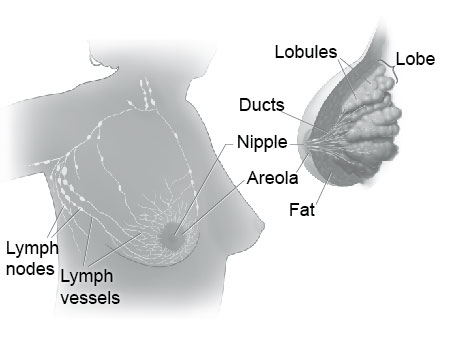|
The Breasts
The
breasts
sit on the chest muscles that cover the ribs. Each breast is made
of 15 to 20
lobes.
Lobes contain many smaller
lobules.
Lobules contain groups
of tiny
glands
that can produce milk. Milk flows from the lobules through thin
tubes called
ducts
to the
nipple.
The nipple is in the center of a dark area of
skin called the
areola.
Fat fills the spaces between the lobules and ducts.
The breasts also contain
lymph vessels.
These vessels lead to small, round
organs
called
lymph nodes.
Groups of lymph nodes are near the breast in the
axilla
(underarm), above the collarbone, in the chest behind the breastbone,
and in many other parts of the body. The lymph nodes trap
bacteria,
cancer
cells,
or other harmful substances.

|
| These pictures show the parts of the breast and the lymph
nodes and lymph vessels near the breast. |
< Previous Section | Next Section > |